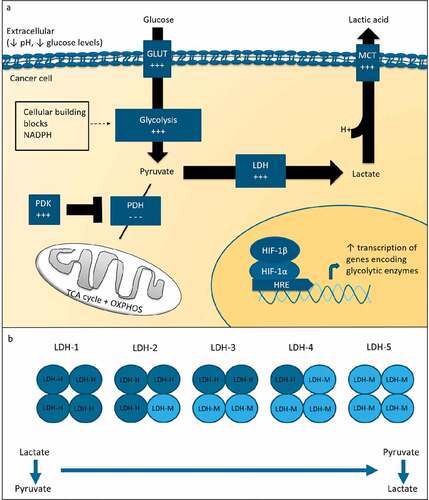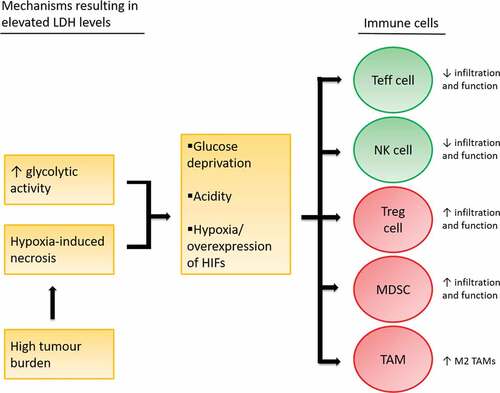Figures & data
Table 1. Retrospective data on the association between serum LDH levels and outcomes following checkpoint inhibition in other cancer types than melanoma
Figure 1. Glucose metabolism in cancer

Figure 2. Immune suppressive effects of glucose deprivation, tumor acidity and hypoxia

